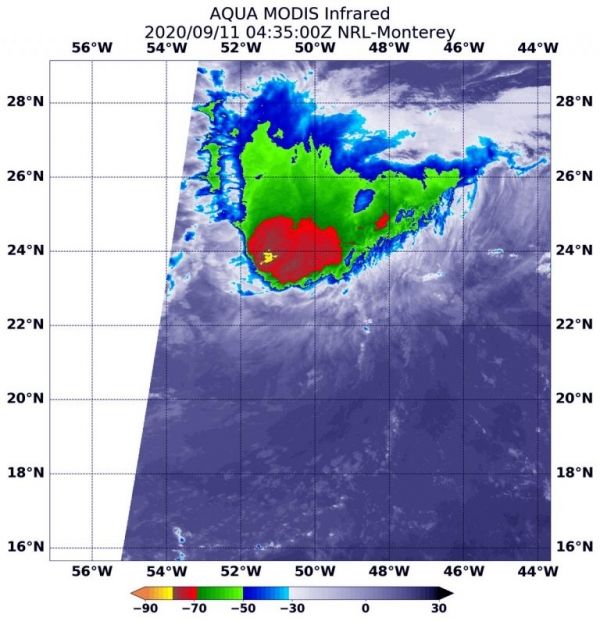Infrared imagery from NASA’s Aqua satellite showed that strong southwesterly wind shear pushed against Paulette creating a wedge-shaped storm.
Tropical cyclones that appear less than round are likely being affected by wind shear or outside winds transitioning into an extra-tropical cyclone or taking on the elongated appearance of a weather front. Today, Sept. 11, wind shear has given Paulette a wedge-shape.
Continue reading at NASA Goddard Space Flight Center
Image via NASA Goddard Space Flight Center


